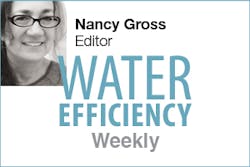You have seen the blind taste tests going on at strategic locations. You have your thoughts about these, whether Coke or Pepsi, Skippy, or Jif. Well, the results are in: nine out of 10 mealworms are just as happy eating plastic muffins as bran muffins. And the tenth mealworm got carried away by a passing eclair.
Seriously, I am about to point you to what I think is very good news. Truly it is not about taste. The sophistication of a mealworm’s palate seems to be modest. But it is about health. Thus far mealworms fed a diet made up exclusively of Styrofoam—or polystyrene—from the moment they are born are as fit and healthy as mealworms feasting on bran from birth. This glimmer of promise for planetary health comes from a Stanford University study, and you can read about it on NBC News: “Styrofoam-Eating Mealworms Could Happily Dispose of Plastic Waste.” Here’s what happened:
Wei-Min Wu and his colleagues at the university’s Department of Civil and Environmental Engineering raised a hundred mealworms from birth strictly on styrofoam, which the creatures can digest thanks to a type of bacteria in their gut. Each worm ate about a few dozen milligrams every day, converting about half to carbon dioxide and leaving half behind as non-toxic waste.
Amazingly, the worms seem to suffer no ill effects from eating plastic all day — they were as healthy as a control group that ate bran. The team is making sure, however, by watching for issues that could be delayed, only appear after multiple generations or after being consumed by yet another creature.
Understanding how bacteria process a plastic thought to be practically indestructible, let alone edible, may lead to a way of disposing safely of the millions of tons of non-recyclable plastic thrown away every year. The work comes on the heels of the discovery that the larva of another insect, the Indian mealmoth, can degrade polyethylene, another problematic plastic.
“Our findings have opened a new door to solve the global plastic pollution problem,” said Wu in Stanford’s news release. The studies are detailed in the journal Environmental Science and Technology.
Plastics are very prevalent in our waterways. Ever since my daughter, who got her degree in Environmental Studies, clued me into the plastic trash problem, which is hiding in plain sight in the packaging found everywhere (even for those who never think about landfills and ocean gyres) I’ve been perplexed by the way that something made from the earth’s elements is so contrary to biodegrading. I am not a scientist so this is just the stress of a layperson longing for harmony, but I kept thinking there has to be a way to restore the constituents to the environment. I even did a little reading on plastics and faced the further discouragement from finding out that there are so many kinds with different strengths; the numbers assigned to plastic containers designate some of these. But at least polystyrene has met its match in a bacteria in the guts of mealworms, which are actually larvae of the darkling beetle .
The video below provides further insight for my plastic-weary brain in that it includes the explanation from one of the Stanford researchers as to why nature is not generally adept at breaking down plastics. A lot of energy goes into the process that rearranges the molecules in plastics making, allowing for incredibly strong carbon bonds, not like anything seen in nature. This ability to be made from earth but not readily subject to decay has made plastic the material of choice for so many things. But we pay for overuse of this convenience with pollution.

